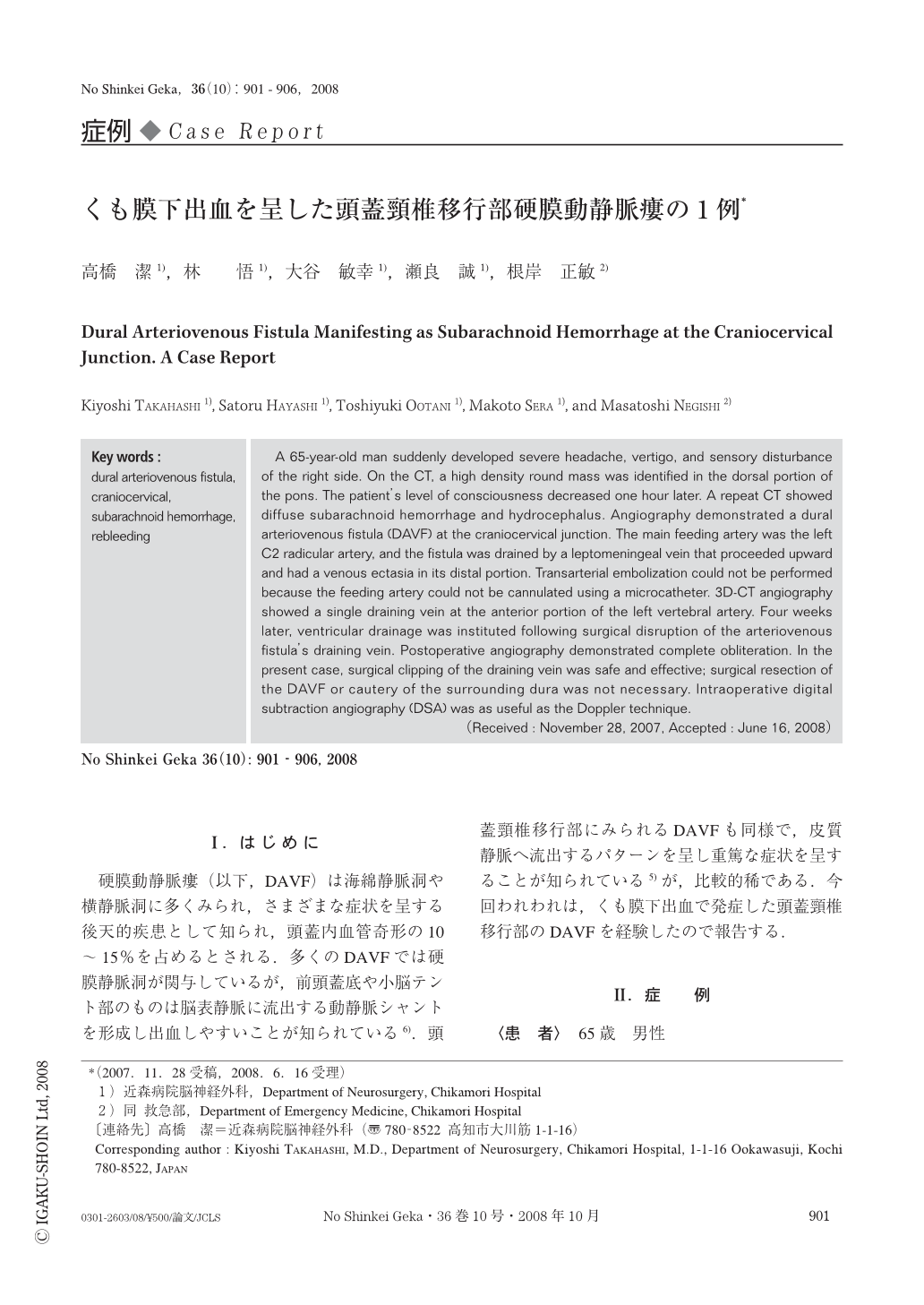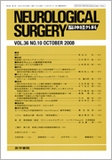Japanese
English
- 有料閲覧
- Abstract 文献概要
- 1ページ目 Look Inside
- 参考文献 Reference
Ⅰ.はじめに
硬膜動静脈瘻(以下,DAVF)は海綿静脈洞や横静脈洞に多くみられ,さまざまな症状を呈する後天的疾患として知られ,頭蓋内血管奇形の10~15%を占めるとされる.多くのDAVFでは硬膜静脈洞が関与しているが,前頭蓋底や小脳テント部のものは脳表静脈に流出する動静脈シャントを形成し出血しやすいことが知られている6).頭蓋頸椎移行部にみられるDAVFも同様で,皮質静脈へ流出するパターンを呈し重篤な症状を呈することが知られている5)が,比較的稀である.今回われわれは,くも膜下出血で発症した頭蓋頸椎移行部のDAVFを経験したので報告する.
A 65-year-old man suddenly developed severe headache, vertigo, and sensory disturbance of the right side. On the CT, a high density round mass was identified in the dorsal portion of the pons. The patient's level of consciousness decreased one hour later. A repeat CT showed diffuse subarachnoid hemorrhage and hydrocephalus. Angiography demonstrated a dural arteriovenous fistula (DAVF) at the craniocervical junction. The main feeding artery was the left C2 radicular artery, and the fistula was drained by a leptomeningeal vein that proceeded upward and had a venous ectasia in its distal portion. Transarterial embolization could not be performed because the feeding artery could not be cannulated using a microcatheter. 3D-CT angiography showed a single draining vein at the anterior portion of the left vertebral artery. Four weeks later, ventricular drainage was instituted following surgical disruption of the arteriovenous fistula’s draining vein. Postoperative angiography demonstrated complete obliteration. In the present case, surgical clipping of the draining vein was safe and effective; surgical resection of the DAVF or cautery of the surrounding dura was not necessary. Intraoperative digital subtraction angiography (DSA) was as useful as the Doppler technique.

Copyright © 2008, Igaku-Shoin Ltd. All rights reserved.


